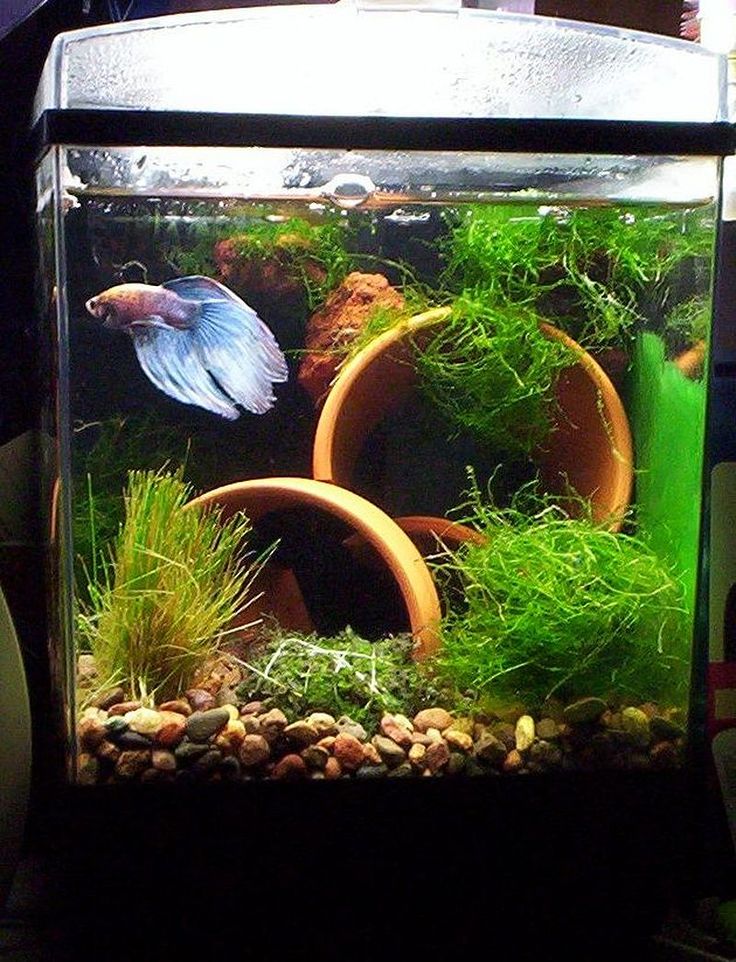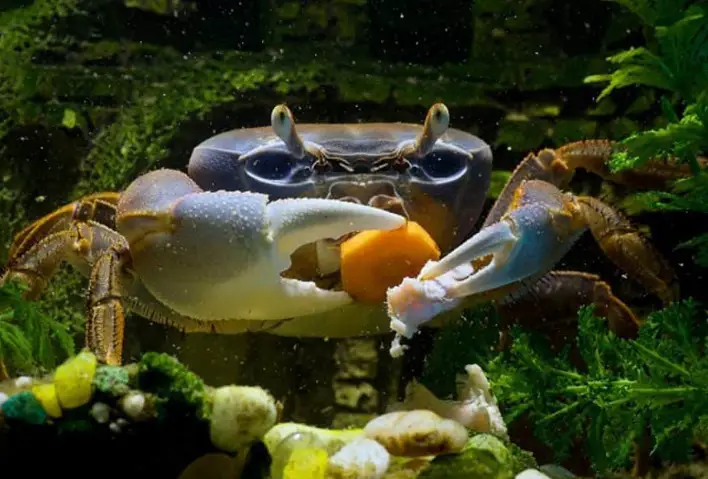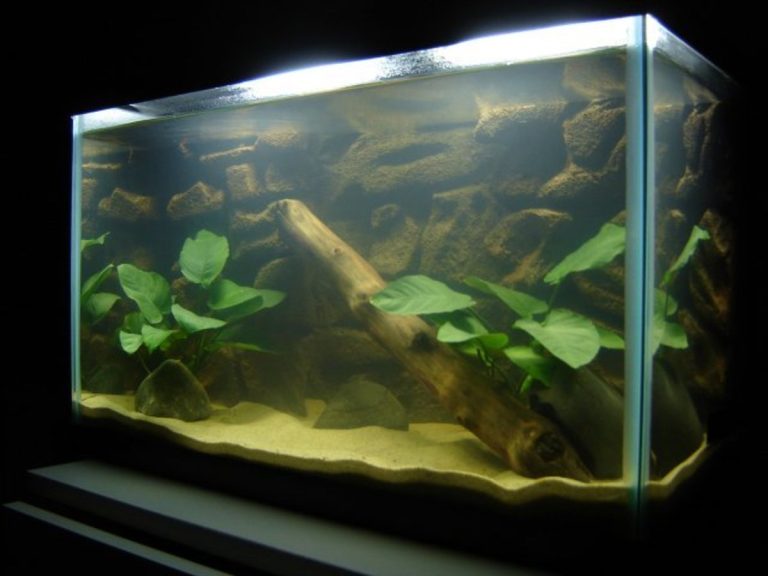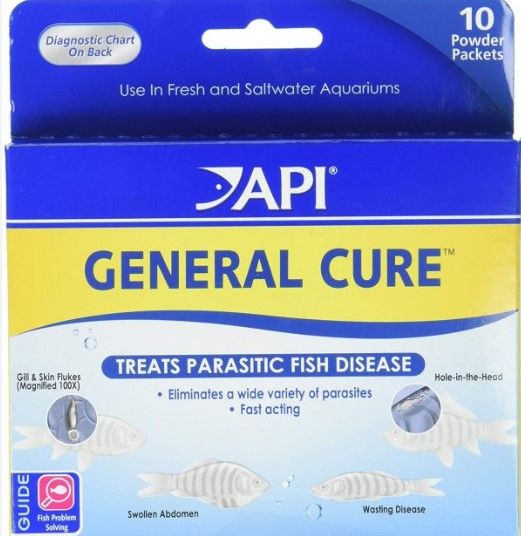How to Easily Clean Plastic Aquarium Plants: A Step-by-Step Guide
To clean plastic aquarium plants, remove them from the tank and soak them in a vinegar and water solution for 10-15 minutes. Then, rinse thoroughly before returning them to the tank.
Aquarium plants add color and vitality to any fish tank, but they require regular cleaning to maintain their beauty and keep fish healthy. Accumulated algae, debris, and fish waste can cling to plastic plants. Cleaning them is important to prevent the spread of diseases and promote the overall well-being of the water ecosystem.
Effective cleaning involves thorough removal of the plastic plants from the tank, soaking them in a vinegar and water solution for 10-15 minutes, and thoroughly rinsing them off before putting them back into the tank. Follow these steps to keep your plastic aquarium plants clean and beautiful.
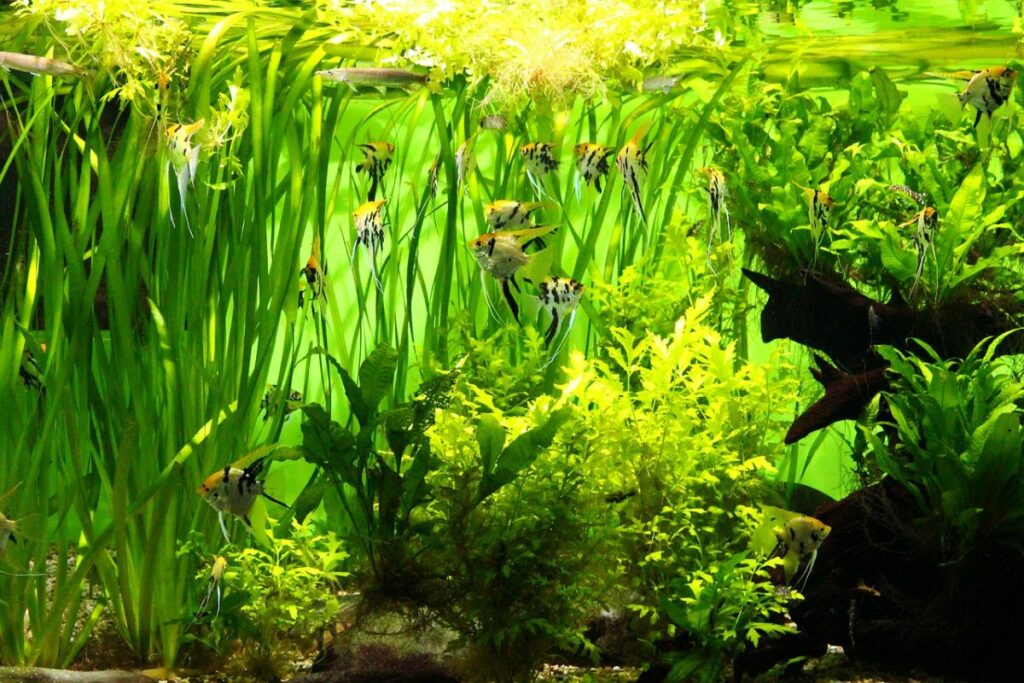
Credit: www.buildyouraquarium.com
Why Clean Plastic Aquarium Plants?
Plastic aquarium plants are a popular and affordable option that many aquarium hobbyists use to decorate their aquariums. While these plants may not be real, they still require regular cleaning to keep them looking attractive and to prevent any unwanted side effects.
In this blog post, we will explore why it is important to clean plastic aquarium plants and how often you should do it.
Benefits Of Having Clean Plastic Aquarium Plants
Keeping your plastic aquarium plants clean offers several benefits that can improve the aesthetics and health of your aquarium. Here are some advantages of regularly cleaning your plastic aquarium plants:
- Prevents the growth of algae: Over time, algae can build up on the surface of your plastic plants. Cleaning them regularly can prevent this growth and keep your aquarium looking clean and clear.
- Removes debris: Dust, dirt, and other debris can accumulate on your plastic plants, leading to unsightly blemishes and discoloration. Removing this debris can bring back the plants’ bright colors and enhance the beauty of your aquarium.
- Improves water quality: A buildup of dirt and debris on your plastic plants can result in poor water quality, leading to health problems for your fish. Regularly cleaning your plastic plants can help to maintain the water quality in your tank.
Risk Of Dirty Plastic Aquarium Plants
Neglecting to clean your plastic aquarium plants can have negative consequences on your aquarium’s health, appearance, and the well-being of your fish. Here are some of the risks of not cleaning your plastic aquarium plants:
- Promotes the growth of harmful bacteria: Dirty plastic plants can become a breeding ground for harmful bacteria, which can lead to diseases and infections in your fish.
- Triggers algae blooms: Algae can quickly take over your aquarium if left unchecked, leading to unsightly green water and an unhealthy environment for your fish.
- Affects the look of your aquarium: Dirty and discolored plastic plants can make your aquarium look unattractive and unsanitary.
How Often Should You Clean Your Plastic Aquarium Plants?
The frequency of cleaning your plastic aquarium plants depends on several factors, such as the size of your tank, the number of fish, and the amount of light your aquarium receives. As a general rule of thumb, it is recommended to clean plastic aquarium plants at least once a month.
However, if you notice any buildup of algae or debris on your plants, it is best to clean them as soon as possible.
Cleaning plastic aquarium plants is essential to maintaining the health and beauty of your aquarium. By cleaning them regularly, you can prevent the growth of algae and bacteria, improve the water quality, and keep your fish healthy and happy.
Preparing Your Aquarium Plants For Cleaning
Aquarium plants provide a natural feel to your aquarium, but they can get dirty and dusty over time. Regular cleaning of your plastic aquarium plants will not only keep them looking neat and healthy but also ensure that your fish thrive in a clean environment.
In this post, we’ll guide you on how to prepare your plastic aquarium plants for cleaning like a professional.
Removing Plants From The Aquarium
Before you begin cleaning, it’s important to remove the plants from the aquarium. This will allow you to clean them properly and prevent any chemicals from entering the tank. Follow these simple steps:
- Turn off the aquarium lights to help reduce stress on your fish
- Use a pair of aquarium-safe scissors or your hand to remove the plants gently from the substrate.
- If any algae or debris is attached to the plants, shake them gently over a bucket or sink to remove it.
Sorting Plants By Type And Size
Once the plants are out of the aquarium, sort them according to their type and size. This will help you to clean them more efficiently. Here are some tips for sorting your plants:
- Separate the plants into smaller piles based on their type – this will make it easier to identify any problems.
- Group the plants according to their size – cleaning larger plants first will prevent smaller ones from getting crumpled or damaged
- Use a clean and dry cloth to wrap delicate plants or those with long leaves to prevent them from getting tangled
Inspecting Plants For Damage Or Wear And Tear
Before cleaning, inspect each plant for any signs of damage, algae growth, or wear and tear. This will help you decide on the most appropriate cleaning method. Here are some tips for inspecting plastic aquarium plants:
- Check for signs of algae, deposits, and plant debris. Gently rub the plants with your fingers to ensure they are clean.
- Inspect the roots, leaves, and stems, looking for any damage, discoloration, or wear and tear.
- If there are any signs of algae build-up or debris, consider soaking the plant in a diluted bleach solution for a few minutes. Do not forget to rinse the plants thoroughly after soaking them.
With these simple steps, you can easily prepare your plastic aquarium plants for cleaning, ensuring your fish have a healthy environment to thrive in.
Cleaning The Plastic Aquarium Plants
Maintaining a clean environment for your fish is essential; it not only keeps them healthy but also keeps your aquarium looking great. Plastic aquarium plants, like any other decor, become dirty and require cleaning. Here, we will discuss how to clean plastic aquarium plants using the following steps:
Selecting The Cleaning Solution
Before cleaning your plastic aquarium plants, you need to choose a cleaning solution. Many cleaning solutions are available in the market, but some of them may harm your fish, plants, and the environment. So, always consider using a safe cleaning solution.
You can use one of the following:
- Vinegar: Vinegar is an effective and safe cleaning solution. It is also readily available.
- Hydrogen peroxide: Hydrogen peroxide is another safe cleaning solution. It not only cleans but also disinfects the plants.
- Bleach solution: You can also use a bleach solution, but you need to be very careful. If it’s not diluted properly, it can harm your fish, plants, and the environment.
Soaking The Plants In Cleaning Solution
Once you have selected a suitable cleaning solution, it’s time to start cleaning. Firstly, remove all the plants from the aquarium and put them in a separate container. Then, pour the cleaning solution into the container, making sure that it completely covers the plants.
Let the plants soak in the solution for at least 15-30 minutes to get rid of any debris and buildup.
Scrubbing The Plants To Remove Debris And Buildup
After soaking, use a soft-bristled brush or sponge to scrub away any debris or buildup. Be gentle in your cleaning process; you don’t want to damage the plants. You can also use a toothbrush for hard-to-reach areas. For more stubborn buildup, you can soak the plants for a little longer or increase the cleaning solution’s concentration.
Rinsing The Plants Thoroughly
After the scrubbing process, it’s time to rinse the plants thoroughly. Use clean, running water to rinse the plants, making sure to remove all traces of the cleaning solution. If the plants still have any residue, soak them in clean water for a few minutes before rinsing again.
After rinsing, dry the plants with a towel before putting them back in the aquarium.
Cleaning plastic aquarium plants is essential for maintaining a healthy and clean aquarium environment. Follow these simple steps, and you can have clean and healthy plants without harming your fish and the environment.
Drying And Replacing The Plants
Plastic aquarium plants are a fantastic addition to any aquarium. They are more robust, require less maintenance and do not need sunlight compared to their live counterparts. However, just like any other decor in your aquarium, they can get dirty and require a good cleaning, which includes drying and replacing them once cleaned.
Here’s how you can do it in a few simple steps:
Drying The Plants Completely
After cleaning the plastic aquarium plants, it is essential to dry them before arranging them back in your aquarium. Here are the key points to consider:
- Use a soft cloth or paper towel to wipe off any excess water from the plants.
- Hang the plants in a cool and dry place, like a clothesline or shower rod, to allow them to air-dry completely. Tip: Don’t expose them to sunlight; it could damage or fade the color of the plants.
- For smaller plants, you can lay them out on a paper towel, letting it absorb any remaining moisture.
Arranging The Plants
Now that the plants are clean and dry let’s move onto arranging them the way you want. Here are a few things to keep in mind:
- Choose the right plants that fit the aesthetic you want to create. The variation and placement of the plants will help create depth and interest for you and your fish to enjoy.
- Position them individually or in groups to simulate a natural and realistic feel. You can use rocks or driftwood to help anchor the plants in place.
- Don’t be afraid to play around with different heights and textures to create a visually appealing and eye-catching look.
Placing The Plants Back Into The Aquarium
The last thing you need to do is place the plants back into your aquarium properly. Below are a few key points to ensure optimal placement:
- Rinse the plants in freshwater and allow them to float for a little while before introducing them back into the aquarium.
- Carefully place the plants into the designated areas by gently pushing them into the substrate around rocks or driftwood.
- Double-check that all of the plants are securely in place and not likely to drift away with the current.
To summarize, drying and replacing your plastic aquarium plants is a necessary part of cleaning your aquarium. Nevertheless, with a few easy-to-follow steps, you can keep them looking good as new and maintain a healthy and vibrant aquarium for years to come.
Tips For Maintaining Clean Plastic Aquarium Plants
Maintaining a clean environment for your fish is essential for their health and wellbeing. Aquatic plants are an excellent addition to any aquarium, providing much-needed oxygen, hiding spots for fish, and enhancing the overall aesthetic value. However, they can also attract algae, bacteria, and other harmful particles, affecting the water quality.
Therefore, it is crucial to maintain clean plastic aquarium plants regularly. Here are some tips to make sure your plastic aquarium plants stay clean and healthy.
Regular Cleaning Routine
Plastic aquarium plants need regular cleaning to keep the water free from algae and other impurities. A comprehensive cleaning routine should include:
- Removing the plants carefully from the aquarium
- Rinsing under running water to remove any debris
- Soaking in a solution of water and vinegar (1: 1) for 20-30 minutes to remove any stubborn algae buildup.
- Scrubbing the plants carefully with a soft-bristled brush to remove any remaining debris or algae.
- Rinsing the plants thoroughly under running water to remove any traces of vinegar.
- Reintroduce the plants into the aquarium.
It is recommended to clean plastic aquarium plants once a month, depending on the level of contamination.
Avoiding Harsh Chemicals
Harsh chemicals like bleach, detergent, or any cleaning agent that contains chlorine or ammonia can damage plastic aquarium plants. These chemicals can remove the color and texture of the plants, making them less visually appealing, and in worse cases, harmful to aquatic life.
Instead, use mild cleaning solutions like vinegar to clean the plants effectively.
Properly Storing And Handling The Plants
Proper handling and storage of plastic aquarium plants can extend their lifespan and maintain their quality. Here are some tips to consider:
- Do not store the plants in direct sunlight or expose them to extreme temperatures.
- Rinse the plants before introducing them to the aquarium to remove any dust or debris.
- Avoid overcrowding the plants in the aquarium. They need adequate space to grow, and clustering them can limit growth and attract unwanted elements.
- Regularly check the plants for any signs of damage such as cracks, thinning, or discoloration. Damaged plants can pose a risk to aquatic life and should be removed.
Maintaining a clean environment is critical for the health and wellbeing of aquatic life. Regularly cleaning plastic aquarium plants, avoiding harsh chemicals, and proper storage and handling can prolong their lifespan and maintain their quality. By following these tips, your plastic aquarium plants will always look good and remain healthy, enhancing the overall aesthetic value of your aquarium.
Frequently Asked Questions On How To Clean Plastic Aquarium Plants
How Often Should I Clean My Plastic Aquarium Plants?
It is recommended to clean plastic aquarium plants every 2-4 weeks to ensure a healthy environment for your aquatic animals.
Can I Use Soap Or Detergent To Clean Plastic Aquarium Plants?
No, using soap or detergent can be harmful to aquatic animals. Instead, use vinegar or bleach solution in the ratio of 1:9 to clean the plants.
How Do I Remove Algae From Plastic Aquarium Plants?
Soaking the plants in a bleach solution for 10-15 minutes and scrubbing them gently with a soft brush can help remove algae from plastic aquarium plants.
Is It Safe To Boil Plastic Aquarium Plants For Cleaning?
Boiling plastic aquarium plants is not safe as it can damage the plants. Soaking them in a bleach or vinegar solution is a safe and effective alternative.
Conclusion
To keep your aquarium looking fresh and vibrant, it is essential to keep your plastic plants clean. As we’ve discussed, cleaning plastic aquarium plants is a simple process that doesn’t have to be a chore. By following the five simple steps outlined in this post, you can maintain the beauty and health of your beloved fish tank.
Ultimately, keeping your aquarium clean is not only good for the plants and the fish but also for you as an owner as it creates a serene and relaxing atmosphere for you to enjoy. Remember, cleaning your aquarium plants is not something to overlook or underestimate.
By dedicating a small amount of time and effort to follow these guidelines, you can see a significant impact on the overall ambiance and health of your tank. Happy cleaning!

